Can You Grow Zinnias in Pots
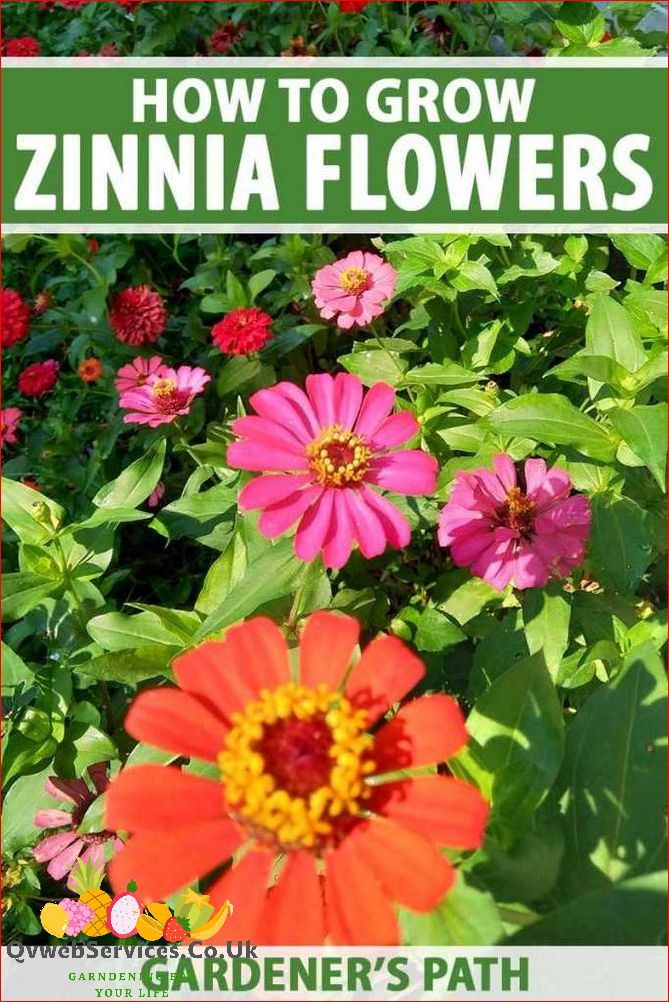
Zinnias are beautiful, vibrant flowers that can bring a burst of color to any garden. But what if you don’t have a garden? Can you still enjoy the beauty of zinnias? The answer is yes! Zinnias can be grown in pots and containers, making them a perfect choice for those who have limited space or don’t have access to a garden.
Growing zinnias in pots is a great way to add a touch of color to your balcony, patio, or even your windowsill. These versatile flowers can be grown in containers of various sizes, allowing you to choose the perfect pot for your space. Whether you have a small apartment or a large backyard, zinnias can thrive in pots and bring joy to your surroundings.
When it comes to growing zinnias in pots, there are a few things to keep in mind. First, choose a pot that has good drainage to prevent waterlogged soil, which can lead to root rot. It’s also important to use a high-quality potting mix that is well-draining and rich in nutrients. Zinnias prefer full sun, so place your pots in a sunny spot where they can receive at least 6-8 hours of direct sunlight each day.
Another important factor to consider when growing zinnias in pots is watering. Zinnias like to be kept evenly moist, so water them regularly, especially during hot, dry weather. However, be careful not to overwater, as this can also lead to root rot. It’s a good idea to check the moisture level of the soil before watering to ensure you’re giving your zinnias the right amount of water.
With the right care and attention, zinnias can thrive in pots and containers, bringing beauty and color to even the smallest of spaces. So, if you don’t have a garden, don’t worry! You can still enjoy the beauty of zinnias by growing them in pots. Get creative with your containers, choose a sunny spot, and watch as your zinnias grow and bloom, adding a touch of nature to your home.
Choosing the Right Pot
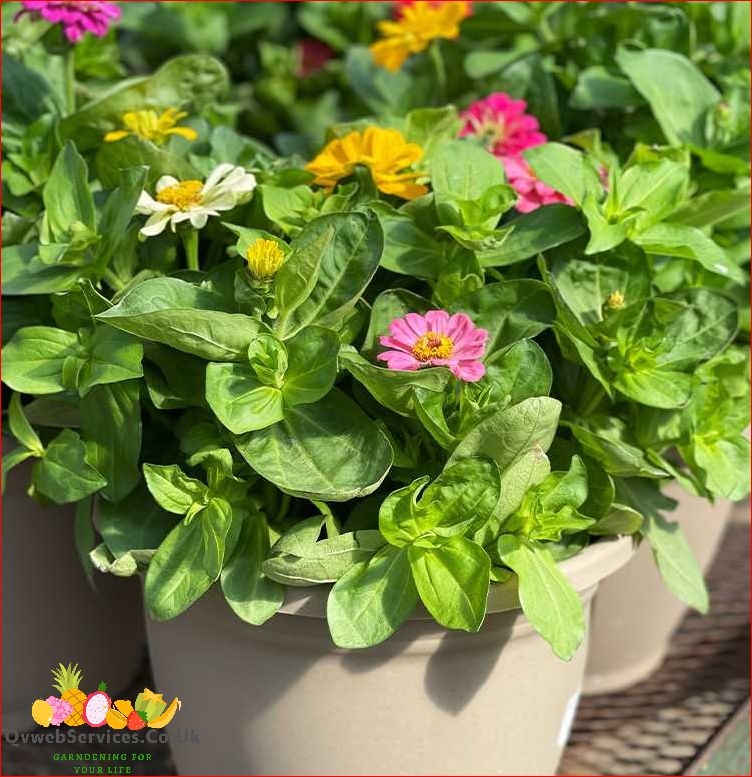
When growing zinnias in pots, it is important to choose the right pot to ensure the health and growth of your plants. Here are some factors to consider when selecting a pot for your zinnias:
Size
The size of the pot is crucial for the proper growth of zinnias. It should be large enough to accommodate the root system of the plant and allow for adequate drainage. A pot that is too small can restrict root growth and lead to stunted plants.
Material
There are various materials to choose from when it comes to pots, including clay, plastic, and ceramic. Each material has its own advantages and disadvantages. Clay pots are porous and allow for better airflow and drainage, but they can also dry out quickly. Plastic pots are lightweight and retain moisture better, but they may not provide as much airflow. Ceramic pots are decorative and can add aesthetic value to your garden, but they can be heavy and may require additional drainage holes.
Drainage
Proper drainage is essential for zinnias, as they do not tolerate waterlogged soil. Look for pots that have drainage holes at the bottom to allow excess water to escape. If the pot you choose does not have drainage holes, you can create them yourself using a drill or by placing a layer of gravel at the bottom of the pot to facilitate drainage.
By considering these factors and choosing the right pot for your zinnias, you can provide them with a suitable environment to thrive and bloom beautifully.
Selecting the Right Zinnia Variety
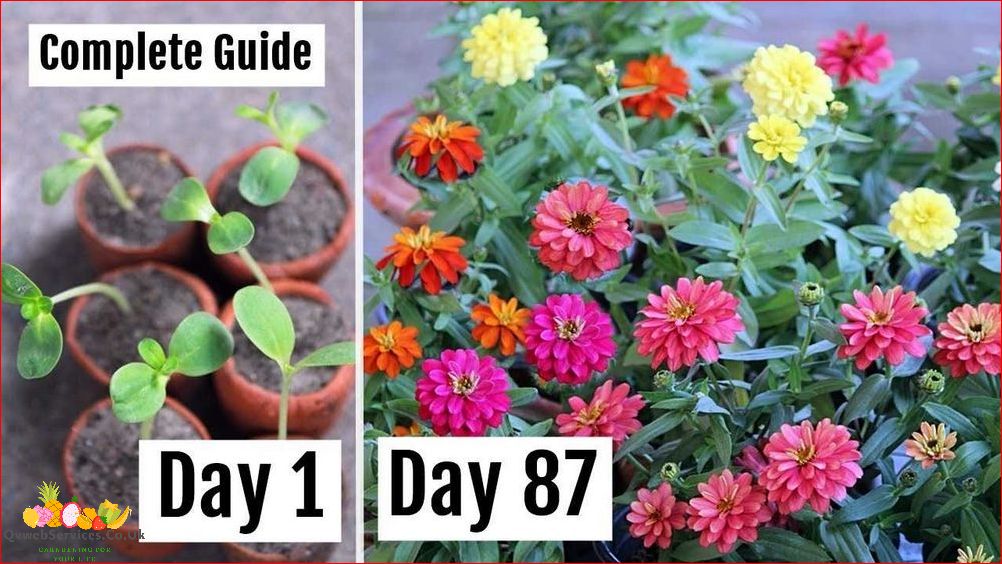
When it comes to growing zinnias in pots, selecting the right variety is crucial for success. Zinnias come in a wide range of colors, sizes, and shapes, so it’s important to choose a variety that suits your preferences and the conditions in your garden.
Here are some factors to consider when selecting a zinnia variety:
- Size: Zinnias can range in height from a few inches to several feet. If you’re planning to grow zinnias in pots, it’s best to choose a compact or dwarf variety that won’t outgrow its container.
- Color: Zinnias are known for their vibrant and diverse colors. Consider the color scheme of your garden or the area where you plan to place the pots. You can choose a single color variety for a more uniform look or mix different colors for a more eclectic display.
- Shape: Zinnias come in various shapes, including single, semi-double, and double blooms. Each shape has its own unique charm, so choose the one that appeals to you the most.
- Resistance: Some zinnia varieties are more resistant to diseases and pests than others. If you’re concerned about these issues, look for varieties that are known for their resistance.
- Growing conditions: Consider the growing conditions in your area, such as the amount of sunlight and the average temperature. Some zinnia varieties are more tolerant of heat or cold, so choose accordingly.
By considering these factors, you can select the right zinnia variety that will thrive in your pots and add beauty to your garden or patio. Whether you prefer small, colorful blooms or large, showy flowers, there’s a zinnia variety out there that’s perfect for you.
Preparing the Potting Mix
Before planting zinnias in pots, it is important to prepare the right potting mix. The potting mix should be well-draining and nutrient-rich to provide the best growing conditions for the zinnias.
1. Choosing the Right Soil
Zinnias prefer a slightly acidic to neutral soil pH, ranging from 6.0 to 7.0. You can use a general-purpose potting mix or create your own by combining equal parts of garden soil, compost, and perlite or vermiculite. This will ensure good drainage and aeration for the zinnias’ roots.
2. Adding Organic Matter
Adding organic matter to the potting mix will help improve its fertility and moisture retention. You can mix in well-rotted compost or aged manure to provide essential nutrients to the zinnias. Aim to add about 20-30% organic matter to the potting mix.
Alternatively, you can also incorporate a slow-release fertilizer into the potting mix to provide a steady supply of nutrients throughout the growing season.
| Ingredients | Proportions |
|---|---|
| Garden soil | 1 part |
| Compost | 1 part |
| Perlite or vermiculite | 1 part |
| Well-rotted compost or aged manure | 20-30% of the total mix |
Once you have prepared the potting mix, fill the pots with it, leaving about an inch of space at the top to allow for watering. Gently pat down the soil to remove any air pockets and ensure good contact between the roots and the potting mix.
Now that the potting mix is ready, you can proceed to plant the zinnia seeds or seedlings in the pots.
Planting Zinnias in Pots
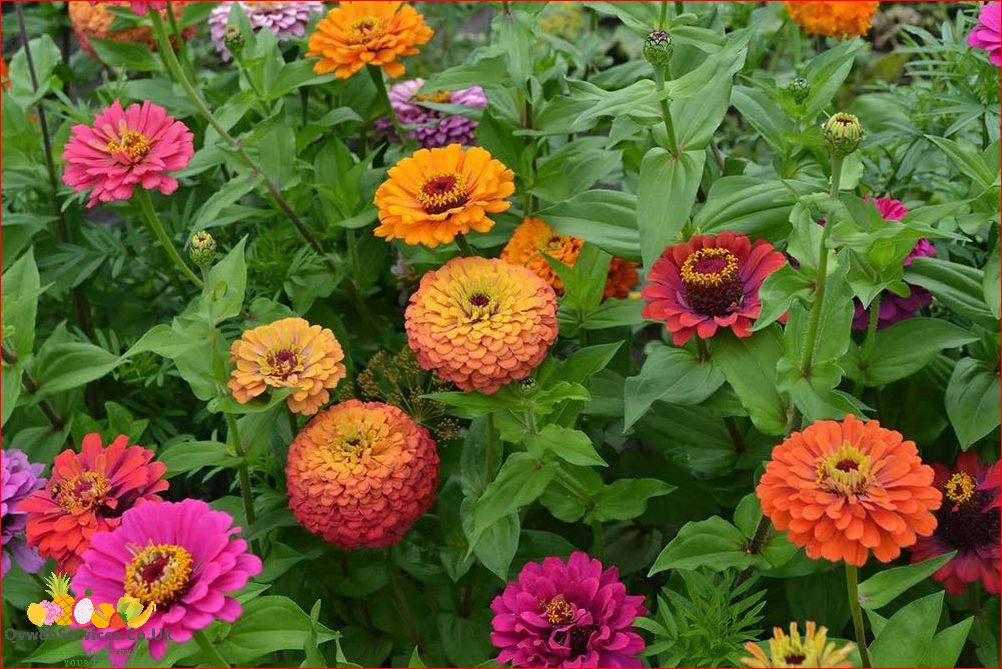
Planting zinnias in pots can be a great way to enjoy these colorful flowers even if you have limited space or poor soil conditions. Here are some tips to help you successfully grow zinnias in pots:
1. Choose the right pot: Select a pot that is at least 12 inches deep and has drainage holes at the bottom. This will ensure proper drainage and prevent waterlogged soil, which can lead to root rot.
2. Use well-draining soil: Fill the pot with a high-quality potting mix that is lightweight and drains well. Avoid using garden soil, as it can be too heavy and compact in pots.
3. Start with healthy seedlings: Purchase zinnia seedlings from a reputable nursery or start your own from seeds. Look for healthy plants with strong stems and vibrant foliage.
4. Plant at the right time: Zinnias thrive in warm weather, so wait until all danger of frost has passed before planting them in pots. This is usually around the same time you would plant them in the garden.
5. Provide adequate sunlight: Zinnias need at least 6-8 hours of direct sunlight per day to thrive. Place your pots in a sunny location, such as a south-facing balcony or patio.
6. Water regularly: Keep the soil evenly moist, but not waterlogged. Water the zinnias whenever the top inch of soil feels dry to the touch. Avoid overhead watering, as wet foliage can lead to fungal diseases.
7. Fertilize as needed: Zinnias are heavy feeders and benefit from regular fertilization. Use a balanced, water-soluble fertilizer according to the package instructions. Avoid over-fertilizing, as this can lead to excessive foliage growth at the expense of flowers.
8. Deadhead spent flowers: Remove faded blooms regularly to encourage continuous blooming. This will also prevent the zinnias from going to seed prematurely.
9. Watch for pests and diseases: Keep an eye out for common pests like aphids, spider mites, and powdery mildew. Treat any infestations promptly with organic insecticides or fungicides.
10. Enjoy the show: Sit back and enjoy the vibrant colors and cheerful blooms of your zinnias. These easy-to-grow flowers will brighten up your pots and attract butterflies and bees to your garden.
By following these tips, you can successfully grow zinnias in pots and enjoy their beauty throughout the growing season.
Watering and Fertilizing
Proper watering and fertilizing are essential for the successful growth of zinnias in pots. Zinnias have moderate water requirements and should be watered regularly to keep the soil evenly moist. However, overwatering can lead to root rot and other diseases, so it’s important not to let the soil become waterlogged.
One way to determine if your zinnias need water is by checking the moisture level of the soil. Stick your finger about an inch into the soil and if it feels dry, it’s time to water. Water the plants thoroughly until water starts to drain out of the bottom of the pot.
When it comes to fertilizing zinnias in pots, a balanced, water-soluble fertilizer is recommended. Follow the instructions on the fertilizer package for the correct dosage and frequency of application. Generally, it’s best to fertilize zinnias every two to four weeks during the growing season.
Table: Watering and Fertilizing Tips for Zinnias in Pots
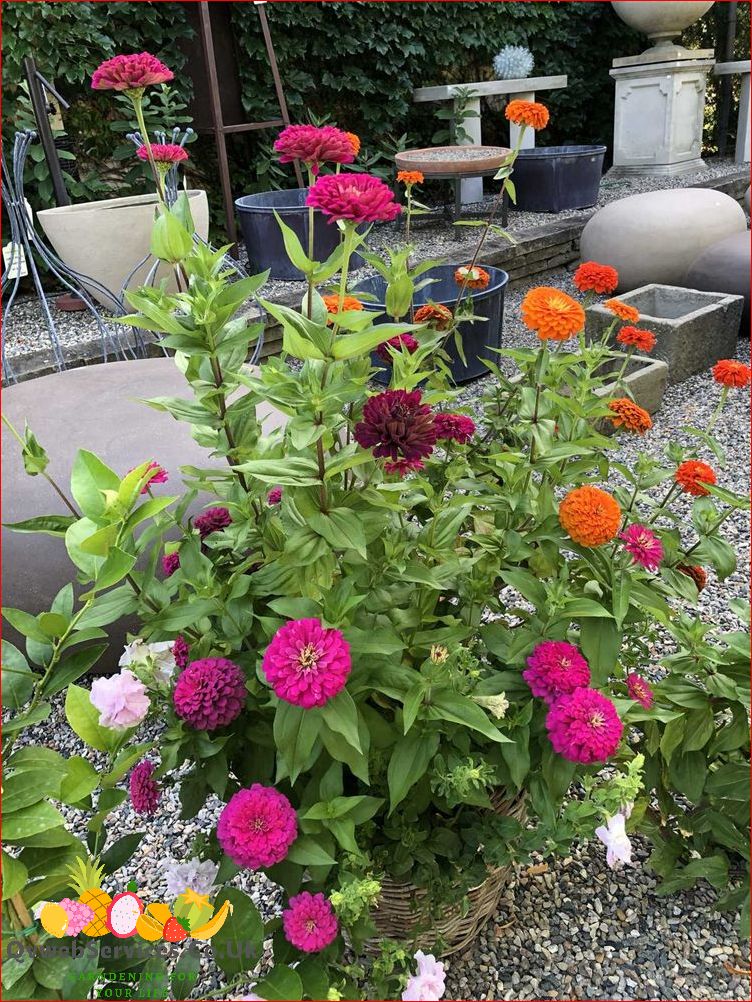
| Watering | Fertilizing |
|---|---|
| Water regularly to keep the soil evenly moist. | Use a balanced, water-soluble fertilizer. |
| Avoid overwatering to prevent root rot. | Follow the instructions on the fertilizer package for dosage and frequency. |
| Check the moisture level of the soil by sticking your finger into the soil. | Fertilize every two to four weeks during the growing season. |
By providing proper watering and fertilizing, you can ensure that your zinnias in pots thrive and produce beautiful blooms throughout the growing season.
Providing Adequate Sunlight
Zinnias are sun-loving plants and require at least 6-8 hours of direct sunlight each day to thrive. When growing zinnias in pots, it is crucial to choose a location that receives ample sunlight. Place the pots in an area that is exposed to the sun for most of the day, such as a south-facing balcony or patio.
If you have limited access to sunlight in your outdoor space, consider using artificial grow lights. LED grow lights are a great option as they provide the necessary light spectrum for plant growth. Position the lights about 12-18 inches above the zinnias and keep them on for 12-14 hours a day.
Choosing the Right Pot
When selecting a pot for your zinnias, opt for a container that is at least 12-18 inches deep. This will provide enough room for the roots to grow and prevent the plants from becoming root-bound. Additionally, choose a pot with drainage holes to ensure proper water drainage and prevent waterlogged soil.
Positioning the Pots
Once you have chosen the right pot, place it in the designated sunny location. If you are using multiple pots, make sure to space them at least 12-18 inches apart to allow for proper air circulation and prevent overcrowding. This will also help prevent the spread of diseases and pests.
Consider using pot feet or a saucer under the pot to elevate it slightly. This will prevent water from pooling at the bottom and improve drainage.
Remember to rotate the pots every few days to ensure that all sides of the zinnias receive equal sunlight. This will help promote even growth and prevent the plants from leaning towards the light source.
Managing Pests and Diseases
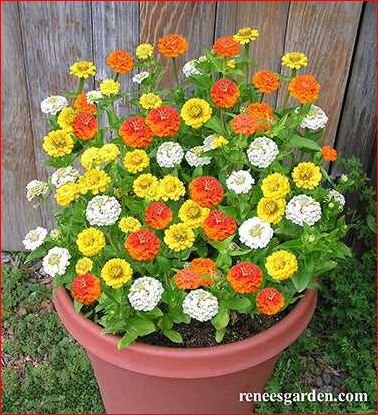
When growing zinnias in pots, it is important to be aware of potential pests and diseases that can affect these plants. By taking preventive measures and addressing any issues promptly, you can ensure the health and vitality of your zinnias.
Pest Control
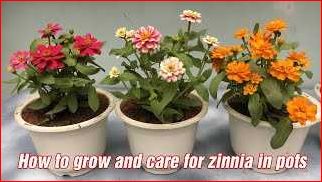
Common pests that may attack zinnias include aphids, spider mites, and whiteflies. To control these pests:
- Regularly inspect your zinnias for signs of infestation, such as distorted leaves or sticky residue.
- If you notice pests, try using insecticidal soap or neem oil to control them. Follow the instructions on the product label for proper application.
- Encourage natural predators, such as ladybugs or lacewings, to help control pests.
- Remove any infested leaves or plants to prevent the spread of pests.
Disease Prevention
Zinnias can be susceptible to diseases such as powdery mildew and bacterial leaf spot. To prevent these diseases:
- Provide adequate air circulation around your zinnias by spacing them properly.
- Avoid overhead watering, as wet foliage can promote the growth of fungal diseases. Instead, water at the base of the plants.
- Apply a fungicide labeled for use on zinnias if you notice signs of disease. Follow the instructions on the product label for proper application.
- Remove any infected plant material and dispose of it properly to prevent the spread of disease.
By following these pest control and disease prevention measures, you can help ensure that your zinnias thrive in pots and remain healthy throughout the growing season.
Supporting Zinnias in Pots
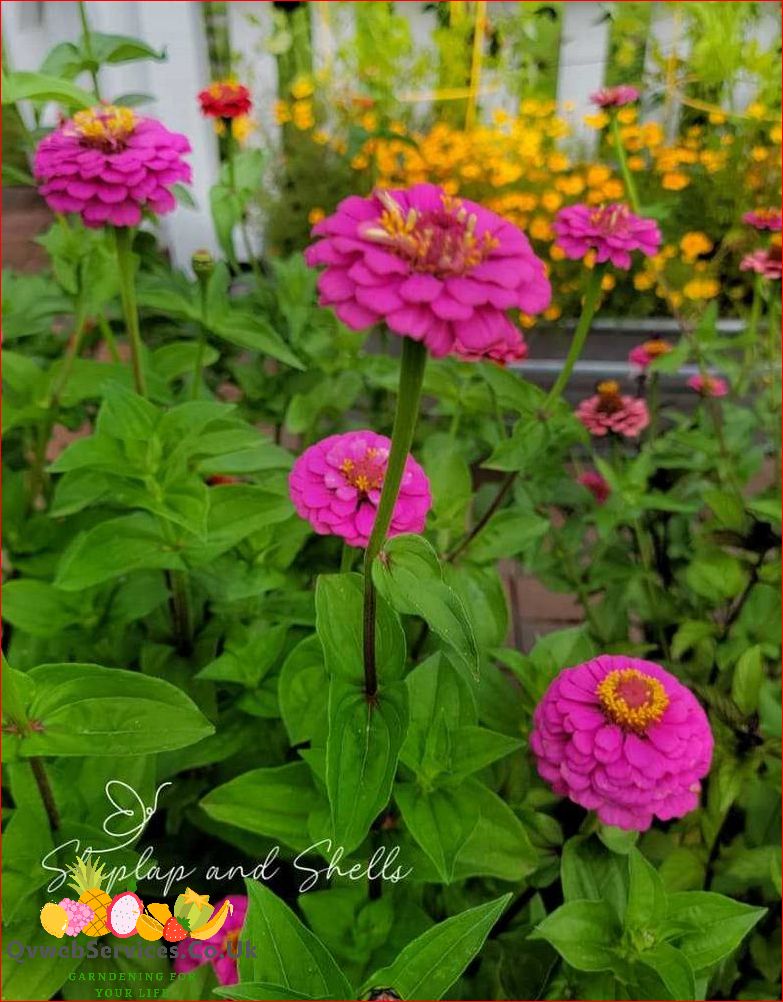
When growing zinnias in pots, it is important to provide proper support to ensure healthy growth and prevent the plants from toppling over. Zinnias have a tendency to grow tall and can become top-heavy, especially when they are in containers.
Choosing the Right Support
There are several options for supporting zinnias in pots. One popular choice is to use stakes or bamboo canes. These can be inserted into the potting soil next to the zinnia plant and gently tied to the stem using soft plant ties. This will help keep the plant upright and prevent it from bending or breaking.
Another option is to use a plant cage or trellis. These can be placed around the zinnia plant and provide support from all sides. This is particularly useful for larger zinnia varieties that have multiple stems.
Proper Placement
When placing the support in the pot, it is important to do so early in the growing season. As the zinnia plant grows, it becomes more difficult to insert stakes or cages without damaging the roots. By providing support early on, you can ensure that the zinnia plant grows straight and strong.
Additionally, make sure to place the support in the center of the pot, so that it is evenly distributed and provides stability. This will help prevent the zinnia plant from leaning to one side or becoming lopsided.
Remember to regularly check the ties or fastenings on the support structure to ensure they are not too tight or damaging the stems. As the zinnia plant grows, you may need to adjust the ties or reposition the support to accommodate its increasing height.
By providing proper support, you can enjoy beautiful and healthy zinnias in your pots throughout the growing season.
Deadheading and Pruning
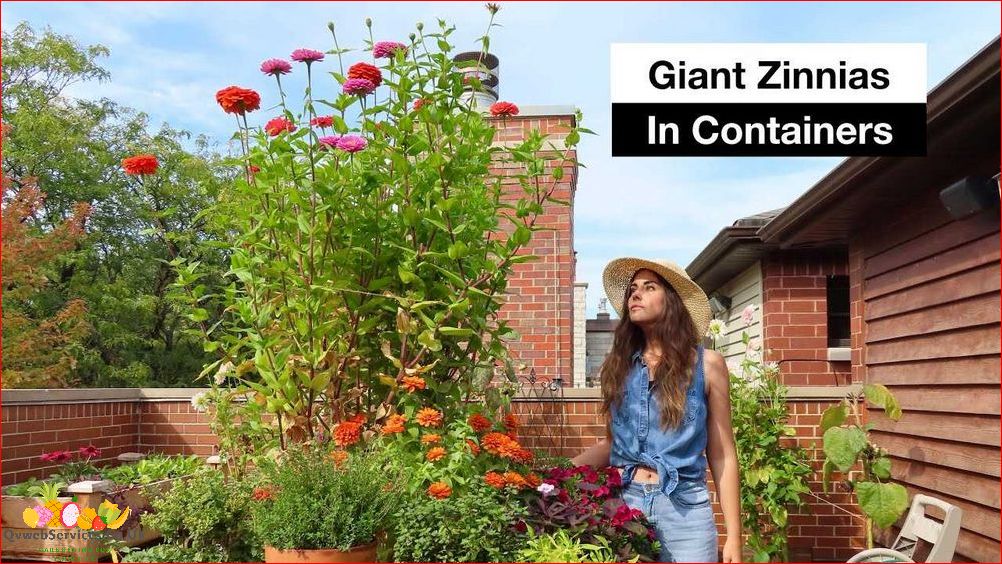
Deadheading is the process of removing spent flowers from the zinnia plant. This not only improves the appearance of the plant but also encourages more blooms to form. When a zinnia flower fades and starts to wilt, simply pinch or cut off the flower head just above a set of leaves or a node. This will prevent the plant from putting energy into seed production and instead redirect it into producing new flowers.
Pruning zinnias can also help promote bushier growth and prevent the plants from becoming leggy. To prune zinnias, use clean and sharp gardening shears to cut back the stems by about one-third. This will encourage the plant to branch out and produce more flowers. Pruning can be done throughout the growing season, especially if the zinnias start to look overgrown or untidy.
It is important to note that deadheading and pruning zinnias should be done with care to avoid damaging the main stem or healthy leaves. Always use clean and sharp tools to prevent the spread of diseases. Additionally, it is recommended to deadhead and prune zinnias regularly to keep the plants looking their best and to encourage continuous blooming throughout the season.
Overwintering Zinnias
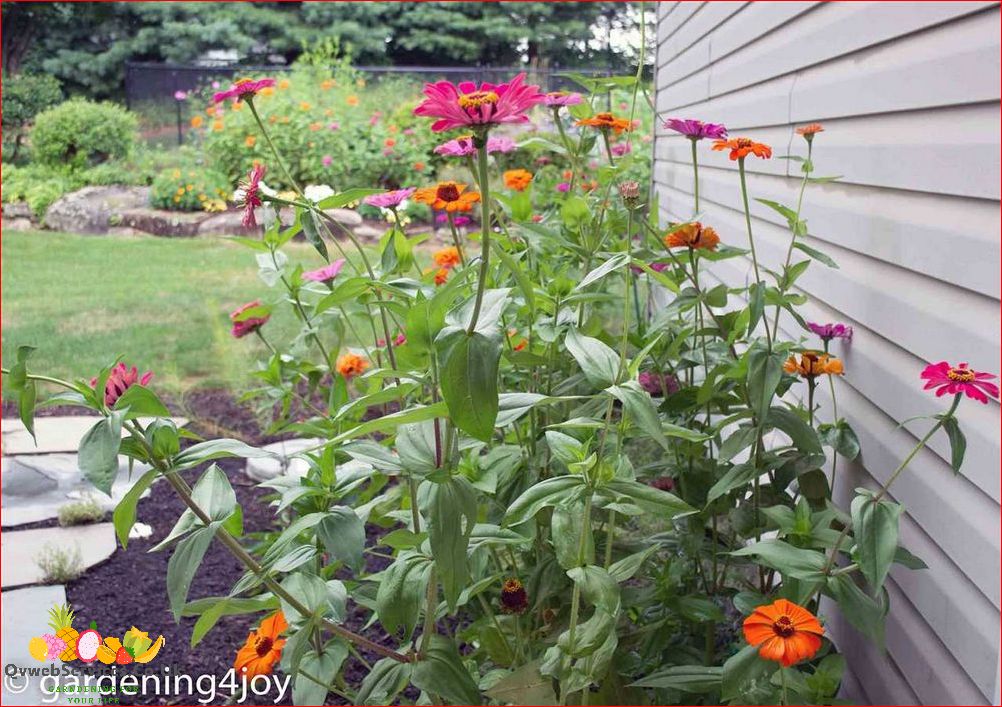
While zinnias are typically grown as annuals, it is possible to overwinter them in certain climates. Overwintering zinnias allows you to enjoy these beautiful flowers year after year without having to replant them each spring.
The key to successfully overwintering zinnias is to provide them with the right conditions to survive the winter. Here are some tips to help you overwinter your zinnias:
- Choose the right variety: Some zinnia varieties are more cold-tolerant than others. Look for varieties that are known to withstand colder temperatures.
- Prepare the plants: Before the first frost, cut back the zinnia plants to about 6 inches above the ground. Remove any dead or diseased foliage.
- Protect the roots: Apply a layer of mulch around the base of the zinnia plants to insulate the roots and help retain moisture.
- Provide shelter: If you live in an area with harsh winters, consider providing additional protection for your zinnias. You can use a cold frame, a greenhouse, or even bring the plants indoors if you have enough space and sunlight.
- Monitor moisture: During the winter months, make sure the zinnias are not getting too dry or too wet. Water them sparingly, only when the soil feels dry to the touch.
- Resume regular care in spring: Once the danger of frost has passed, remove any winter protection and resume regular care for your zinnias. They should start growing again and produce beautiful flowers.
Overwintering zinnias can be a rewarding experience for gardeners who want to enjoy these vibrant flowers year after year. With the right preparation and care, you can successfully overwinter your zinnias and have them blooming again in the spring.
Harvesting Zinnias
Harvesting zinnias is a rewarding and enjoyable task for any gardener. These vibrant flowers can be cut and used in a variety of ways, from creating beautiful floral arrangements to adding a pop of color to your home decor. Here are some tips for harvesting zinnias:
Timing
It’s important to harvest zinnias at the right time to ensure the best quality blooms. The ideal time to cut zinnias is in the morning, after the dew has dried but before the heat of the day sets in. This helps to preserve the freshness and longevity of the flowers.
Tools
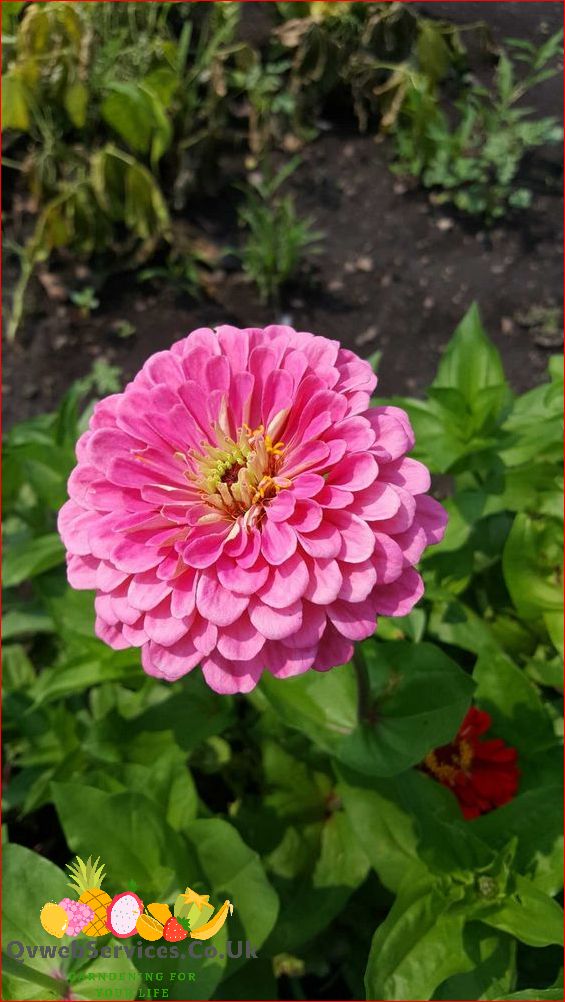
When harvesting zinnias, it’s best to use a sharp pair of garden shears or scissors. This will ensure clean cuts and minimize damage to the plant. Make sure to clean your tools before and after use to prevent the spread of diseases.
Tip: Keep a bucket of water nearby to place the cut zinnias in immediately. This will help to keep them hydrated and prevent wilting.
Choosing Blooms
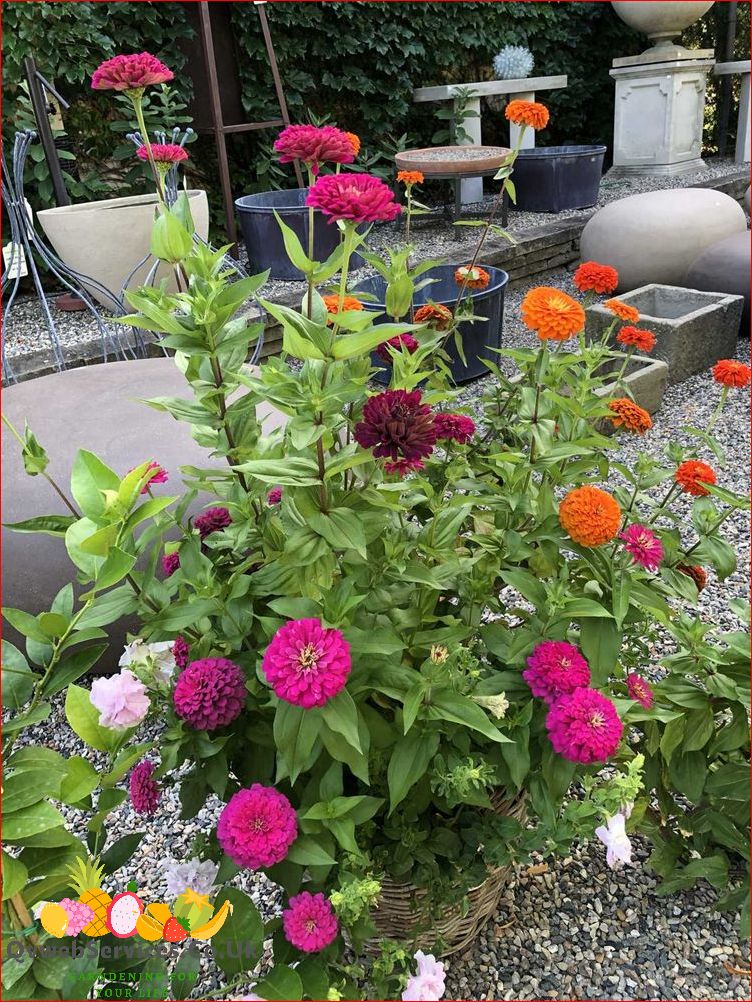
Look for zinnias that are fully open and have vibrant colors. Avoid picking flowers that are wilted or have signs of damage or disease. Selecting healthy blooms will ensure that your floral arrangements or home decor projects look their best.
Tip: Zinnias come in a variety of colors and sizes, so feel free to mix and match different varieties to create a stunning bouquet.
By following these tips, you can enjoy a bountiful harvest of zinnias and create beautiful arrangements that will brighten up any space.
Video:Can You Grow Zinnias in Pots
As Stephanie C. Phillips, I am the voice and green thumb behind QvWebServices.co.uk. My passion for gardening and sharing my knowledge with others has led me to create a space where fellow gardening enthusiasts can find practical advice and inspiration.
From the sun-soaked fields of Texas to the cozy balconies of city dwellers, I strive to guide you through the nuances of growing your own food and beautifying your surroundings with plants. My articles are a reflection of my dedication to the art of gardening, and I hope they encourage you to get your hands dirty and enjoy the rewards of nurturing life from the soil.
Join me on this verdant journey to cultivate not just gardens, but a sense of community and connection to the earth.

